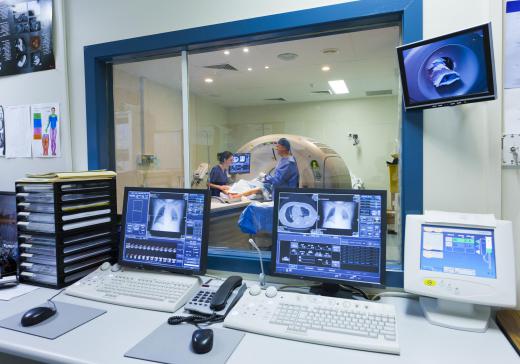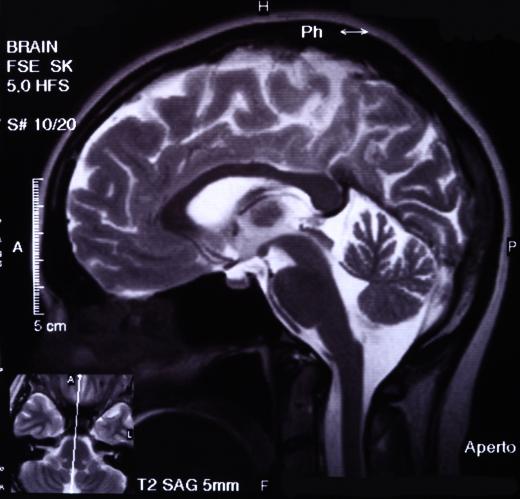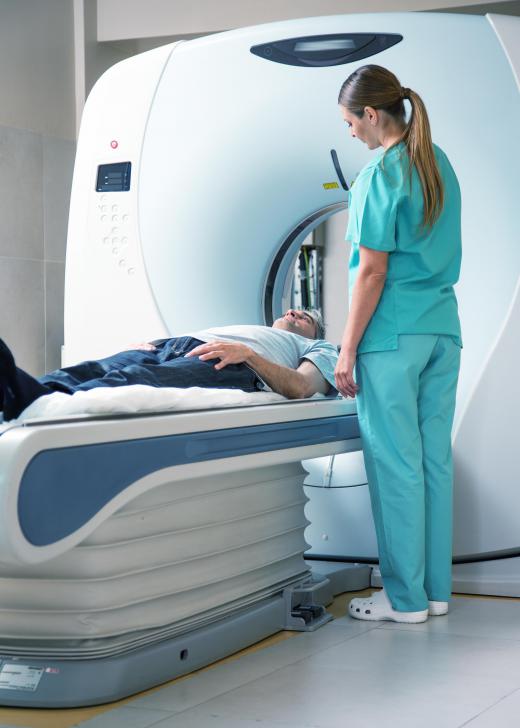What is fMRI?
 Michael Anissimov
Michael Anissimov
FMRI is a device used by doctors or other medical personnel to map brain activity. It stands for functional magnetic resonance imaging. The f at the beginning of fMRI is not capitalized unless at the beginning of a sentence.
An fMRI machine is a big, bed-sized, expensive piece of medical equipment that generates high magnetic fields. For this reason, people with pacemakers are warned not to go near fMRI machines. Patients must remove metallic objects before entering the machine. To enter the machine, a patient lies on a horizontal stretcher-like platform which slides into a cylindrical cavity. The patient is scanned magnetically from all sides and a real-time image is created, which is submitted to doctors for further analysis.
An fMRI machine works using the principle of magnetic resonance. The practice was formerly known as magnetic resonance tomography (MRT) or nuclear magnetic resonance (NMR).

Magnetic resonance works as follows. It has been known for over 100 years that blood flows to certain areas of the brain when those areas are active. This is because active neurons consume more blood than idle neurons. Red blood cells carry a substance called hemoglobin all around the body, including to active neurons. When a neuron is active, it consumes more oxygen, which it receives in the form of hemoglobin.

Hemoglobin is an "oxygen storage molecule" that is capable of releasing and absorbing oxygen multiple times. Red blood cells contain ample hemoglobin, which is oxygenated with air from the lungs, then deoxygenated when cells are supplied with oxygen. Oxygenated and deoxygenated hemoglobin have different magnetic properties.
Oxygenated hemoglobin is diamagnetic, which means that it slightly repels a magnetic field. Deoxygenated hemoglobin is paramagnetic, meaning that the application of an external magnetic field causes it to become slightly magnetic. Both effects are small, but measurable.

The deoxygenation of hemoglobin in active neural areas is what the fMRI machine picks up. This occurs several seconds after the neural activity itself. FMRI machines have fallen under criticism as a scientific tool for a number of reasons, including that some theories of interpreting fMRI are unfalsifiable, and that different parts of the brain may consume more or less oxygen even if they are at roughly the same activity level. Regardless, fMRI has been used successfully for years to diagnose various brain problems. It has also been used in psychology to study which tasks activate which brain areas.
AS FEATURED ON:
AS FEATURED ON:















Discuss this Article
Post your comments